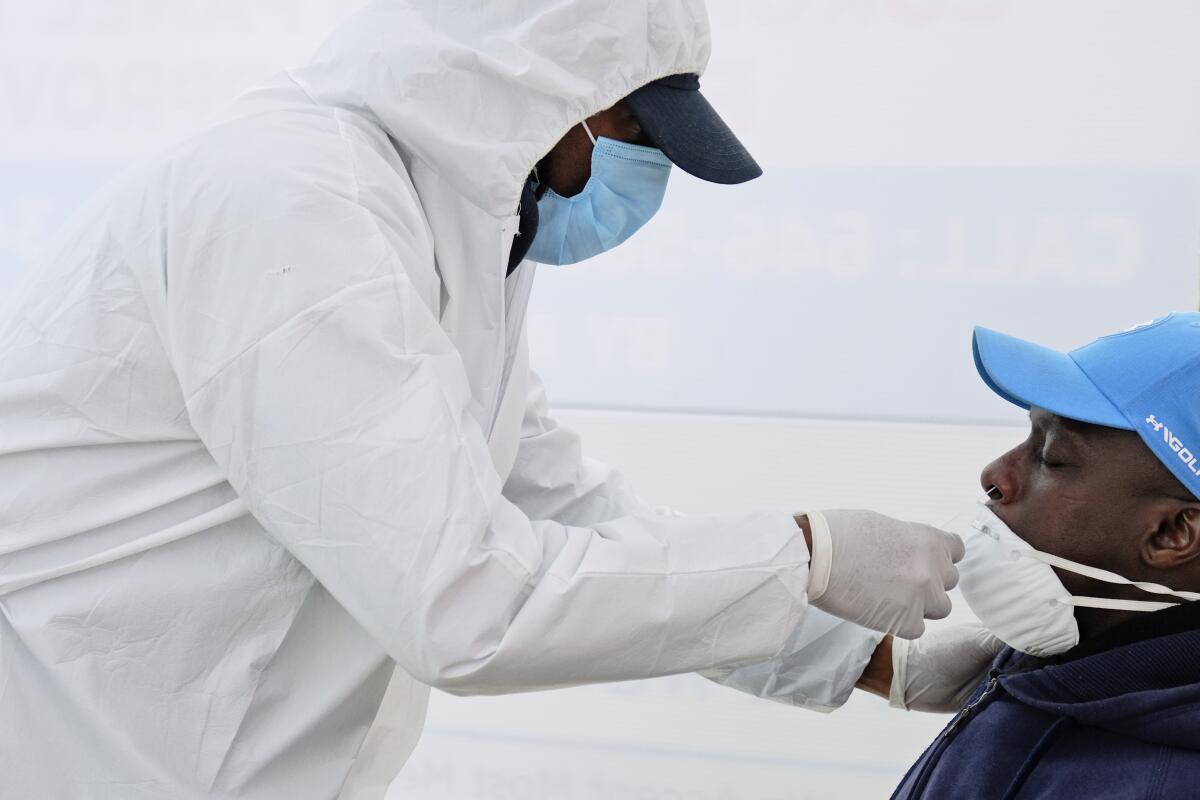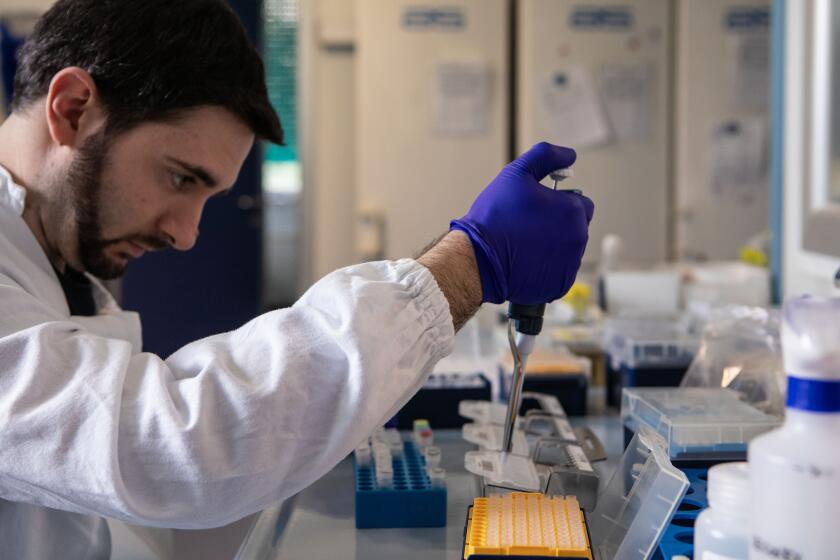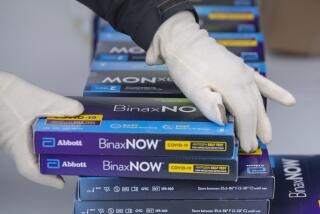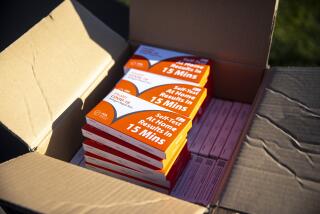Not all coronavirus tests are the same. These are the two main types

Testing is critical to controlling the coronavirus and eventually easing the restrictions that have halted daily life for most Americans. But there’s been confusion about what kinds of tests are available and what they actually measure.
There are two main types in the United States. One is a diagnostic test to see if you have an active infection with the coronavirus, whether you have symptoms of COVID-19 or not. The other checks to see if you were previously exposed at some point and fought off an infection.
Currently, almost all testing in hospitals, clinics and drive-through sites uses the first testing method, to help doctors detect and treat people with active infections.
The second method looks for coronavirus antibodies in the blood because their presence is a sign that the immune system has fought off an infection. Experts predict this type of test will play a key role in allowing many Americans to safely return to work and school by identifying those who are likely immune from the virus.
Here’s a closer look at both tests and how they work:
Testing for active infection
Genetic testing is the best method for detecting active COVID-19 infections and making a diagnosis. The process requires several steps and high-tech testing equipment to detect tiny traces of the virus that causes COVID-19.
First, the doctor or nurse gathers samples from a patient’s nose or throat using swabs. The sample is developed through a process called polymerase chain reaction, or PCR, which is used to boost any traces of virus until they are detectable.
The same process has long been used to diagnose viruses such as HIV and hepatitis.
The U.S. Food and Drug Administration has now authorized dozens of these types of tests that can be run at hospitals, university laboratories and large testing chains such as Quest Diagnostics, along with one that patients can use at home. The tests typically take four to six hours to run and can take a day or more to turn around if a sample needs to be shipped to another site for processing.
Last month, several faster options that don’t require laboratory processing came on the market. The fastest is a 15-minute test from Abbott Laboratories run on small, portable electronic machines found in thousands of hospitals, clinics and doctor’s offices. The test puts all the chemical ingredients into a small cartridge that’s inserted into the Abbott machine along with the swabbed sample.
There are caveats to these types of tests: Someone can test negative one day and then positive the next. Much depends on the level of virus and whether the swab picked up enough of it to make a good sample.
The FDA recently authorized the first genetic test that uses saliva, rather than a nasal swab, but its availability is limited for now.
U.S. testing continues to be squeezed by huge demand, limited testing machines and shortages of key supplies such as swabs. While the U.S. is now conducting well over 1 million tests per week, most experts say that number will need to increase at least threefold before social distancing is dramatically eased.
Testing for antibodies
The second type of test won’t tell you whether you’re currently infected with the virus, but whether you were infected sometime in the past.
Instead of searching for the virus itself, these tests search for blood proteins called antibodies, which the body produces days or weeks after fighting an infection. The same approach — usually a finger-prick of blood on a test strip — is used for HIV, hepatitis and many other infections.
The next testing challenge in the coronavirus pandemic is to diagnose those who were infected and then recovered. They are the ones with COVID-19 immunity.
Dr. Anthony Fauci, the nation’s top infectious disease official, says it’s a “reasonable assumption,” that if you have antibodies, you will be protected from another infection. But federal researchers still have to answer several key questions: How accurate are the tests? What antibody level is needed for immunity? How long does that immunity last?
By testing broad populations for antibodies, researchers hope to learn how widely the virus spread and how deadly it really is. Both questions remain unresolved since experts believe at least 25% of those infected never show symptoms. Some of those larger studies are getting started.
For now, FDA Commissioner Dr. Stephen Hahn suggests the blood tests could be used by frontline healthcare workers. For example, a doctor who tests positive for antibodies could be in a safer position to treat COVID-19 patients than a colleague who tests negative.
The FDA has authorized four antibody tests based on preliminary reviews. But more than 90 others have launched without FDA oversight under a federal emergency policy intended to quickly ramp up testing options. Those tests are supposed to bear disclaimers, including that they have not been FDA-approved, though many don’t.
Several laboratory and physician groups have called for tighter FDA control.
“They have a responsibility to go back, demand more rigorous clinical trials and probably put some guardrails around these tests,” said Dr. Gary Procop of the Cleveland Clinic, president of the American Society for Clinical Pathology.







